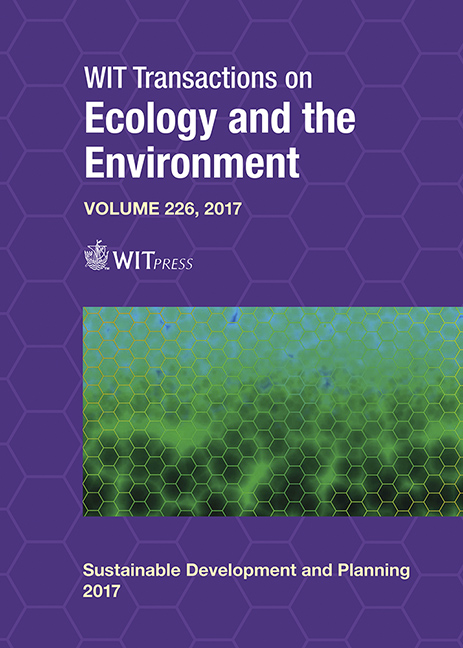COMMUNITY MANAGEMENT OF THE WATERFRONT: EXPLORING COMMUNITY SPACE AND ACTIVITY FOR ECONOMIC STABILITY IN TOMITSU, AMAKUSA CITY, JAPAN
Price
Free (open access)
Transaction
Volume
226
Pages
12
Page Range
325 - 336
Published
2017
Size
373 kb
Paper DOI
10.2495/SDP170281
Copyright
WIT Press
Author(s)
OKOKO ANITA NYAPALA
Abstract
The community identity facets, respective use of resources and management of community assets are among key ingredients for sustainable local economic development and community economies. Likewise, the use and management of community spaces are at the heart of spatial practice as a concept of social space that determines sustainability or decline of local economic development and utility value of the said social space. The use and appreciation of the value of these spaces also depends on the size of user population and their capacities to increase spaces’ economic viabilities. Japan and many countries in the developed world such as Germany, Sweden, Portugal and Spain have been facing a shrinking rural population for decades. A similar scenario of population decline presents itself in the Study area, Tomitsu. In October 2016, the New Urban Agenda recognized shrinking population as an emerging challenge to sustainable urban development that is associated with local development, and also proposed its management where appropriate. Many scholars have argued against the revitalization approach as a first course of action to manage city shrinkage because the approach does not necessarily require increased human population; nature and natural conditions can easily revitalize a region as a great centre of development. Proposed projects for such areas and scholars associated with this argument have however emphasized the importance of public space and activity in driving regeneration. This is why, given the challenges of population decline in the Tomitsu district, this study explored community space and community activity and the opportunities it provides as means to an end – economic stability, which is a vital first step to the regeneration of a shrinking region. The study aims to contribute some insight into the ongoing redevelopment process in Tomitsu through interactive participatory research in the community, and add to the academic knowledge in this field. The main aim of this study to is adapt and apply the theory accordingly.
Keywords
community space, local economic development, social space, community activity, local identity, shrinkage, regeneration, renovation





